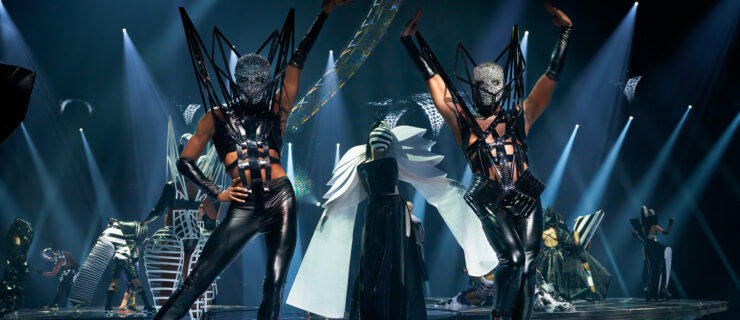Behind the Scenes of Cirque du Soleil's Newest Show in Sin City
Inside Cirque
Cirque du Soleil was established in Quebec City, Canada, in 1984 by lively, nomadic artists. Cirque is now based in Montreal and has grown into a colossal enterprise with many touring and resident shows. In 20 years, it has grown from 70 employees to 3,000, representing 40 nationalities and speaking 25 languages.
Cirque du Soleil is known for thrilling audience members of all ages with productions that don’t have storylines but feature specialty acts from acrobatics to contortionism. Now, Cirque is trying something new with KÀ, its first show to have a scripted plot. Created and directed by Robert Lepage, KÀ spins the epic tale of separated twins—a brother and sister—who are, interestingly, performed by two real-life sisters. Acrobatic performances, martial arts, puppetry and pyrotechnics help to tell the story of the twins’ death-defying journey to find each other.
Number Crunching
The 72 cast members, whose ages range from 19 to 62, worked with 18 creators, a 30-person production staff and 150 technicians for three years to construct an entire show that is under contract to run for at least 10 years at MGM Grand in Las Vegas. A price tag of $165 million makes KÀ not only the most expensive Cirque show to date, but also the priciest ever presented in Sin City. This is Cirque’s fourth permanent show in Las Vegas, along with O at Bellagio, Mystère at Treasure Island and Zumanity-Another Side of Cirque du Soleil at New York-New York Hotel & Casino.
KÀ’
s theater, which already existed inside MGM Grand, had to be completely overhauled. Massive industrial- and Chinese-influenced balconies envelop the 2,000-seat theater, which contains a stage that rotates 360 degrees, cast-member-controlled cables, state-of-the-art projections and a 50-foot-long stage known as the “sand cliff” that turns from a sand-covered stage into a vertical wall and allows for some scenes to be viewed from an aerial perspective.
The Creative Team
Jacques Heim, who was offered the gig as KÀ’s choreographer two and a half years ago, is also the artistic director of the L.A.–based dance company, Diavolo, which utilizes enormous structures and props. “I work with acrobats and different types of movers and dancers,” he says. “I’m not used to Cirque, but I’m used to this kind of process.” Heim adds that the normal interaction between the choreographer and the tumbling coach is much different in KÀ than in standard shows. “Usually, when there’s a trapeze or trampoline act, the coach puts the number together. Then the choreographer comes in and colors the act.” In KÀ, however, the coach doesn’t create the tumbling sequences beforehand, because the movement must follow the storyline. Instead, both the choreographer and the coach collaborate.
Performance Notes
-
Props:
Performing in KÀ can be dangerous. “One false move and you can get in trouble,” Heim says. Large, heavy structures move in all directions, and the theater itself is foreboding due to its height and complexity.
-
The Look:
KÀ continues the Cirque tradition of vibrant, flashy costumes and unique face paint, for which you “have to complete training,” explains assistant choreographer Dana Perri. For example, cast members make appointments with a makeup artist who applies makeup to one eye, after which the performer must repeat the process on the other eye. “You have lesson after lesson until they feel you’ve graduated,” she says.
Firsthand Knowledge
Julie Fotheringham, a graduate of UNLV’s dance program, performs three roles in KÀ, a schedule that isn’t uncommon to Cirque shows. As a spear-woman, archer and forest person, she has been surrounded by the set’s remarkable size and machinery 12 hours a day, six days a week since rehearsals started in October 2003.
“The apparatuses are different than anything anyone’s ever [used],” she says. And the technology used to create KÀ is so vast that neither she—nor the audience—can be clear on exactly what and how much goes on behind the curtain and under the stages. Performances have been delayed [due to] the technical side,” Fotheringham says, but with all the new technical effects, it’s not surprising that there would be a few kinks to work out along the way.



